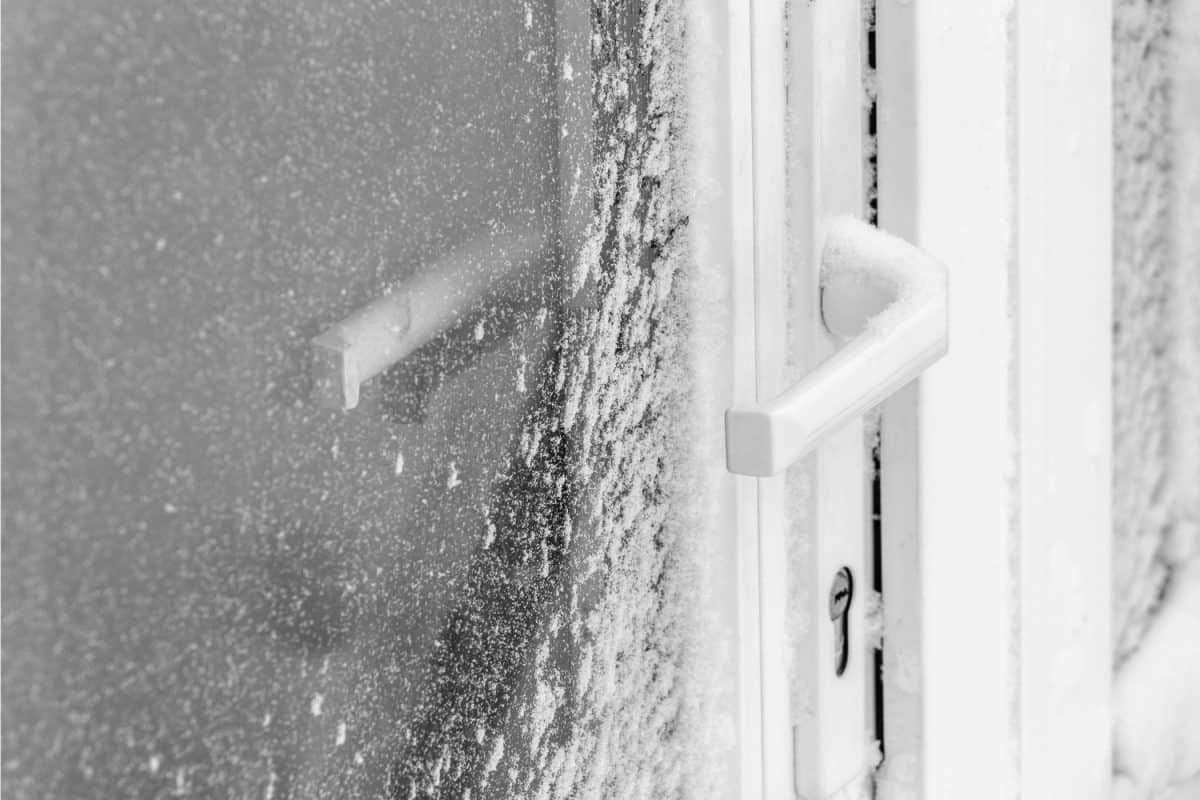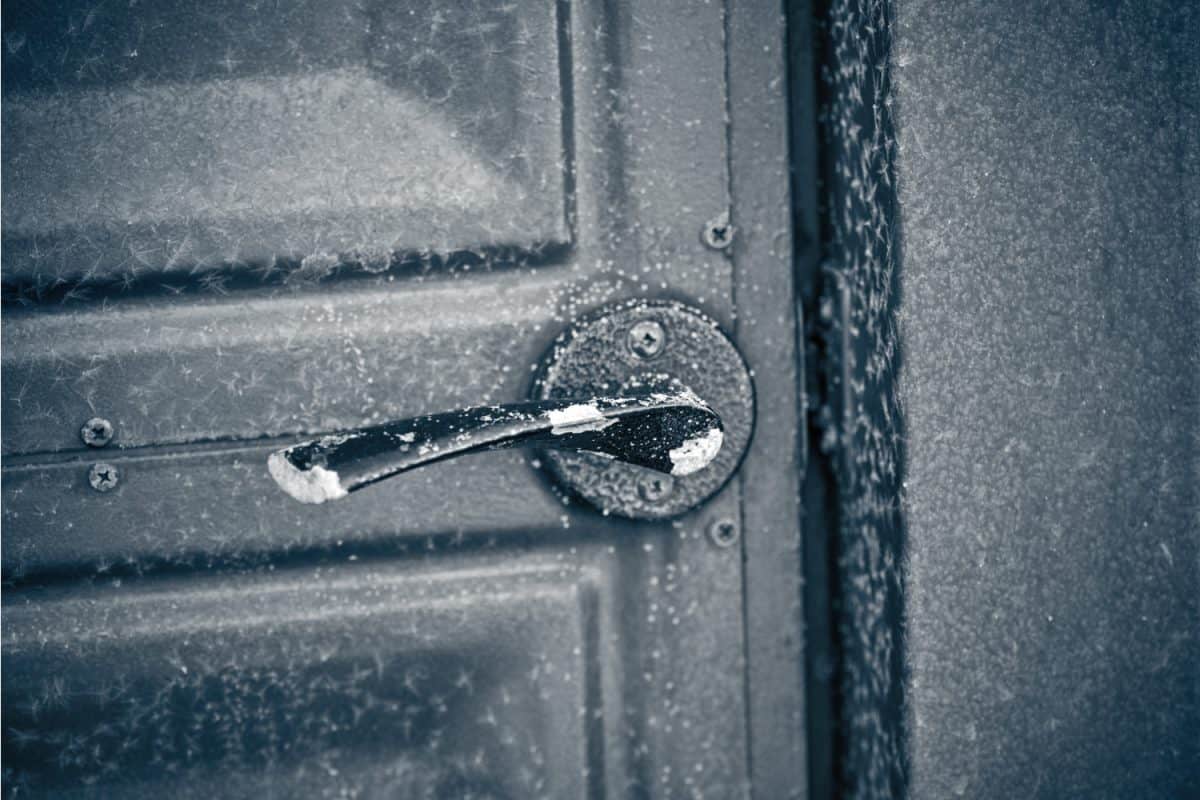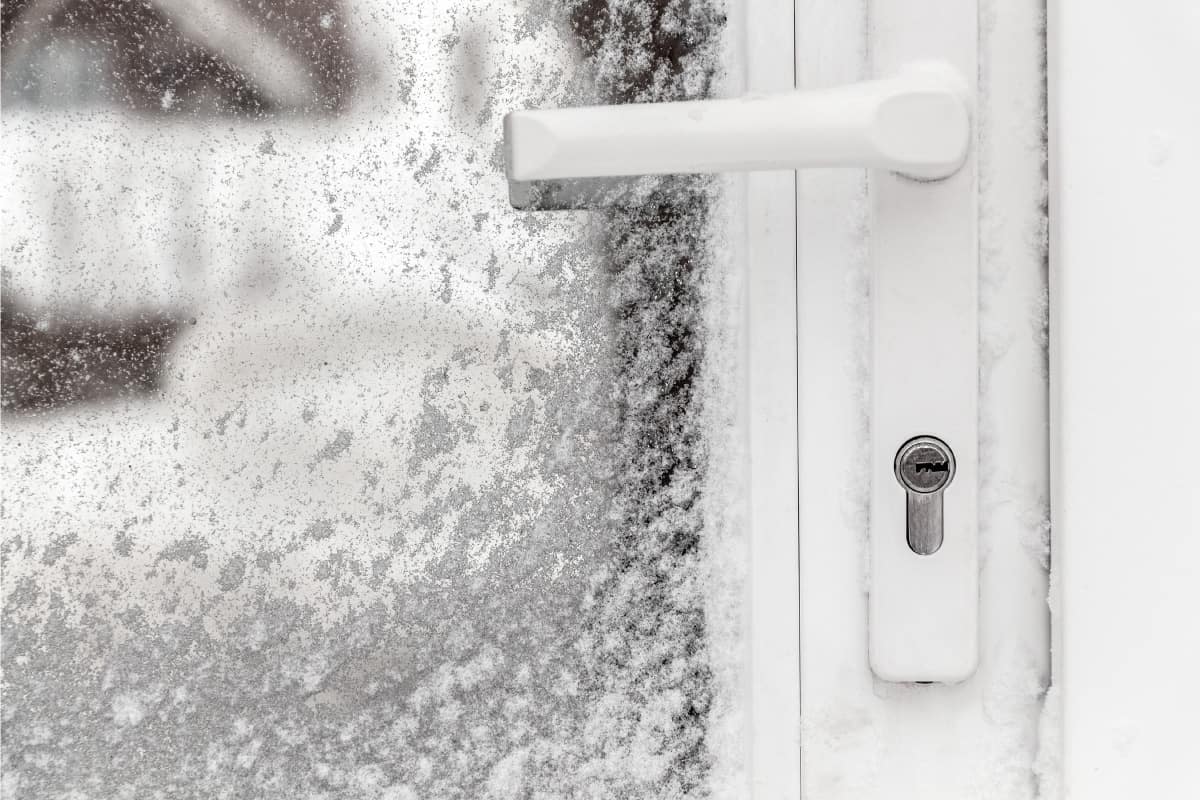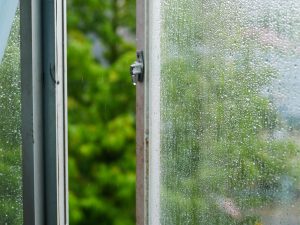Changes in weather patterns will cause problems to your doors. The frigid winter can make it difficult for you to open the door as ice that accumulates on the sides can be too thick, and melting might take longer. To help you with this problem, we have consulted the experts on how you can stop doors from freezing shut, and here's what they recommend.
- Properly seal the door before installing it on the doorway.
- Control the humidity levels in your home.
- Maintain the good condition of the door weatherstripping.
- Make the area near your door warm.
- Use an insulating lubricant like WD-40 on the door threshold.
If you want to prevent frozen house doors, you can follow the tips below:
Aside from the door itself, the locks and other door hardware might not work with frozen parts. Hence, you must prepare the door before the cold months come. Keeping your doors from freezing will benefit you in the long run. If you want to learn how you can avoid a frozen home door, continue reading below.

House Door Freezing Issue
Due to fluctuating temperatures, there are instances that doors will freeze. If you are residing in cold states, it can be a usual dilemma. Regardless of the door material, you should know the reasons why doors will freeze.
First, you must understand how moisture gets into your home through the door. With an unsealed door and high humidity level in the house, freezing will be a problem when winter falls. The moisture gets trapped and condensed. When the temperature is low, the condensation quickly freezes the door.
Another uncommon reason is how your home HRV system works. The pressure might prevent proper circulation of air inside if the system does not work as intended. So, you will need regular system maintenance for efficient operation.
After considering the factors, you need to do the necessary door preparations instead of acting on the problem when it occurs. Keep reading to learn ways you can tackle freezing doors.

Methods To Prevent House Doors From Freezing
Follow the tips below to prevent your doors from freezing shut:
- Properly seal the door before installing it on the doorway. For sliding and glass doors, keep the blinds and curtains open to allow warm air.
- Control the humidity levels in your home by properly sealing the door. Replace old and damaged weatherstripping to keep moisture from leaking out.
- Maintain the good condition of the weatherstripping. If your door's weatherstripping is still fine, you can drill 3/16-inch diameter holes on both top and bottom of the door. You will allow warm air to pass through and circulate inside the house.
- Make the area near your door warm. If there is a big gap on the bottom of the door, you can add a door sweep.
- When the temperature is warm outside, leave the door open for a few minutes. In this way, you can melt the ice accumulated on the door. It will also help to use an exhaust fan or a dehumidifier. Thus, you can reduce moisture build-up inside the door panels.
- Use an insulating lubricant like WD-40 on the door threshold. Apply WD-40 or other graphite-based lubricants on the door tracks or door sills. With the low freezing point, you can prevent the door from freezing.
With the options presented, you can avoid incurring more expenses with a frozen door. If you missed out on the preventive measures, you could still fix the problem. Read further what you should do to open a frozen house door.

How Do You Open A Frozen House Door?
For a frozen door, you should not force it open. You can damage the door track, frame, glass, and locks. Without using any material or tool, you can put pressure on the door to crack the ice. In that case, you can easily solve the problem if the ice is only thin.
You can find simple materials at home to remove the ice without too much pressure on the door.
- If you are using a scraper, make sure that it is not any metal material. Metal might scrape off the paint or glass of the door.
- Another easy way you can do is melt the ice with a hairdryer. Just target the nozzle to the areas with ice.
- Pour lukewarm water on the iced parts. It will do no good if the water is too hot.
- You can also use rubbing alcohol with vinegar to melt the ice. Just use a small amount to maintain the finishing or paint on the door.
Can House Door Locks Freeze?
Besides the door, the locks can also freeze. Like doors, moisture might get inside the locks during warm seasons and freeze during winter. A frozen lock can compromise your safety at home. Yet, there are ways to prevent the issue.
It will help if you oil your door locks early in the year before the cold hits your area. By oiling, it creates a protective layer inside the lock. The inner mechanical components can avoid moisture so that you can still use the lock.
Read more about oiling locks here: Should You Oil Padlocks? [And How To]
If you have a frozen lock, you have to de-ice it. You will need to use the lock's key to apply the products to the mechanism. Here are some products that you can use to thaw a frozen door lock:
- Hand sanitizer
- Petroleum jelly
- Matchsticks and lighter
- Hairdryer
- WD-40
Will WD-40 Unfreeze A Lock?
You can use WD-40 to prevent your locks from freezing. When you apply the product, your locks can be frost-free for several days.
This famous multi-use product displaces water and protects metals from rusting. Thus, it will prevent the moisture from settling inside the lock components. You can spray this on the locks before the weather gets chilly. Just spray a small amount in your locks and worry no more.
The drawback about putting some WD-40 in locks is that it can get dirt and debris. Your locks will not work as intended. So, it is best to remove the lubricant and clean the lock before the warm season comes.
Click here to see this lubricant on Amazon.
Learn more by checking out this post: Should You Spray WD-40 In A Lock?
How Do You Keep Weather Strips From Freezing?
Weatherstripping seals the door from air leaks at home to ensure good air quality. It should stay snug around the surfaces without hampering the operation of the door. There are different materials to choose from based on your needs.
Here is a list of common weatherstripping materials:
- Felt
- Fin (plastic Mylar seal)
- Reinforced foam or silicone
- Rolled vinyl
- Tape (closed or open cell foam, EDPM rubber)
- Tension seal
If you have existing weatherstripping, check if it needs replacement. Dry and worn weatherstripping will not be effective in sealing the doorway. Observe tears, cracks, and other signs of deterioration. You should replace the stripping once every few years.
You can buy peel-and-stick weatherstripping online or from any hardware store. After installation, add silicone oil along the strip to keep it from freezing. By doing so, water won't bind on the strip when it gets cold.
Click here to see this silicone lubricant on Amazon.

In Closing
A frozen door is a hassle. It might take you time to get rid of the ice. Don't worry because there are ways you can prevent the door from freezing shut. You can either seal, lubricate, or warm up the door. For a frozen door, you can still melt the ice without any damage.
It will also help to replace worn door weatherstripping for an effective way of sealing air leaks. You can also encounter a problem if your door locks freeze. To prevent freezing, you can spray some WD-40 to protect the lock mechanism.
After all, keeping your house doors from freezing shut makes your home more comfortable.






Useful tips for wintertime! No one wants to get stuck at home with their door frozen solid!
My front, nothern facing storm door has frozen shut twice already this winter – each time a snow storm has passed through. Thankfully, I do have two other exit/entry doors, but what a hassle. First time, I sat with a hair dryer for a very long time trying to melt the ice buildup from inside the house. Second time, I put pet safe rock salt on the outside bottom (where it appears to be most frozen) of the door. It took a couple treatments, but that did eventually work, along with some careful, gentle tappings with a small hammer to break the ice into pieces.
I am definitely going to try using the WD-40 spray. I was just telling a friend that there had to be a way to pre-treat the door, similar to what the road crews do before a predicted ice/snow comes through. This is the first year of over 30 living in this house that the door has trapped me inside. The other time, though, it was just a buildup of snow against the door. I replaced the worn door guards last year, so the seal should be fairly tight. Maybe I should have left the old sweep on the door?
WD-40 is like duct tape. Saves us in all kinds of situations. Hmm, wonder if putting some duct tape along the bottom of the door outside might also help. Oh, I also used some old Prestone deicer that I found in the basement. It worked really good, too.
A popular organic degreaser and solvent is WD-40. It has components made of alcohol that keep moisture from accumulating on everything you apply it to.